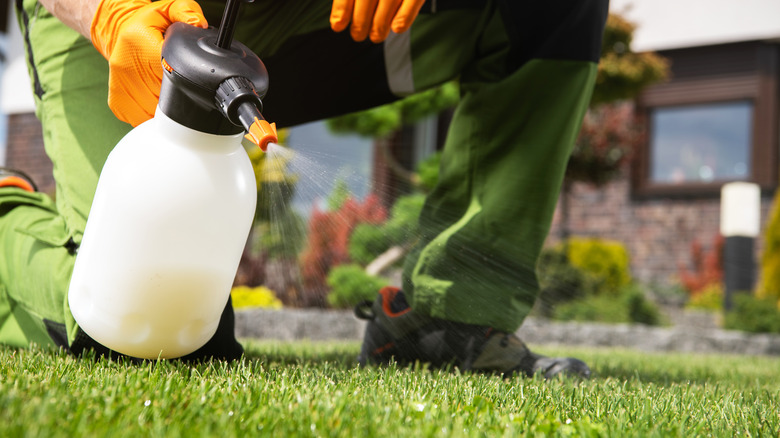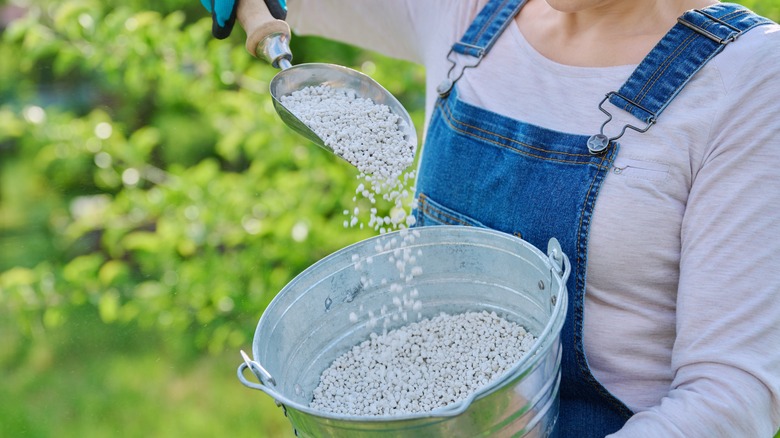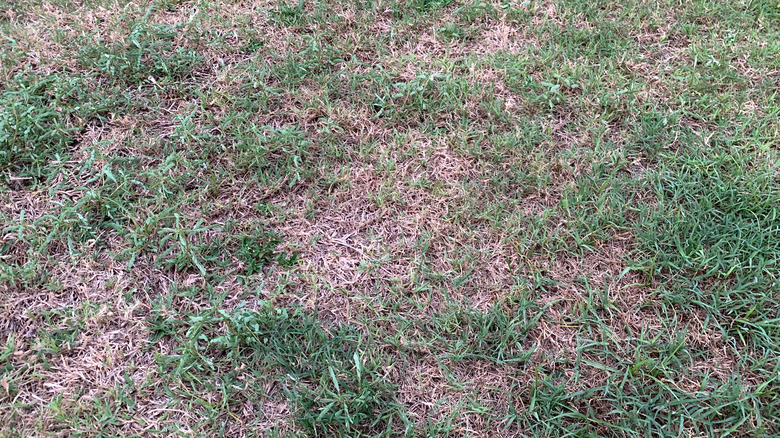Give Your Lawn A Healthy Dark Green Glow-Up Fast With One Simple Solution
We may receive a commission on purchases made from links.
The secret to a perfectly green lawn is an often-overlooked nutrient — iron. Unlike nitrogen-heavy fertilizers that promote rapid growth at the expense of color, iron supplements enhance chlorophyll in grass, creating a richer, darker green within days. This works because iron is an essential part of chlorophyll, the pigments responsible for photosynthesis, and directly affects the color intensity of your lawn. There are many ways to help your grass look greener, but none of them will work as fast as this. Using a liquid iron on your lawn can show visible results in as little as 48 hours, while granular iron fertilizers typically produce results within one to two weeks.
While nitrogen helps grass grow taller, iron makes each blade photosynthesize more efficiently, which results in deeper coloration without a boost in growth. This makes iron supplements perfect for homeowners who want an immediate visual impact without extra mowing. Iron treatments work well on cool-season grass like Kentucky bluegrass but can also be effective on warm-season types like Bermuda. For the best results, you should apply iron when your grass is actively growing and during moderate temperatures, like early morning or late afternoon.
The right way to add iron for maximum results
Choosing the right iron treatment for your lawn is important. You want to see positive results but also save your grass from long-term damage. A liquid iron formula, like this Simple Lawn Solutions fertilizer on Amazon, will provide the fastest color change. A granular iron fertilizer offers a slower, extended release. Budget-conscious homeowners can use old rusty nails to create a DIY iron formula for their lawn. For liquid applications, follow the manufacturer's instructions for dilution and then spray evenly across your lawn using a pump sprayer. Try to avoid overlapping, which could result in uneven coloring. Granular iron can be applied evenly with a hand-spreader, followed by light watering to activate the product.
Timing is important for iron applications. An early morning treatment is best and allows maximum absorption before the daytime heat hits. Avoid applying during peak sunlight hours to prevent wasted product due to evaporation or worse, leaf burn. If you have a newly seeded lawn, hold off using iron treatments until the roots have had time to establish. For existing lawns, apply iron every two to four weeks during growing seasons, alternating with a balanced fertilizer to maintain the overall health of your lawn. Lightly water prior to using the treatment and hold off on a normal watering for at least a day to prevent runoff and allow the grass time to absorb the iron.
When iron can do more harm than good to your lawn
While an iron treatment can provide a beautiful color enhancement on your lawn, improper use can create some major headaches. Overapplication can lead to blackish-purple discoloration, a condition called "iron burn". This can take weeks to grow out and will ruin the look of your lawn. High iron concentrations can also lower the overall pH level of your soil, potentially making the ground too acidic for healthy grass growth. It is important to remember that iron supplements do not replace balanced fertilization. They enhance color but do not provide the nitrogen, phosphorus, and potassium that your lawn needs.
You should always be aware of the condition your lawn is in prior to any treatment as well. Drought-stressed grass can absorb the iron too quickly, increasing the potential to burn. Overly wet lawns may cause the iron to leach away before your grass can even utilize it. Always do a test prior to beginning any treatment. You can even DIY your own test to check the health of your soil. In the end, when used as part of a comprehensive lawn care plan, iron remains the fastest, and safest, way to achieve that deep green color without hurting your lawn.


